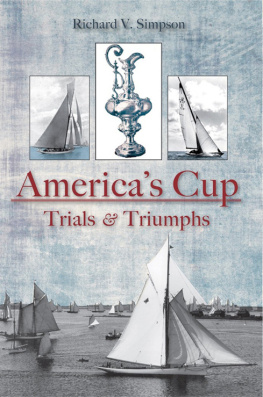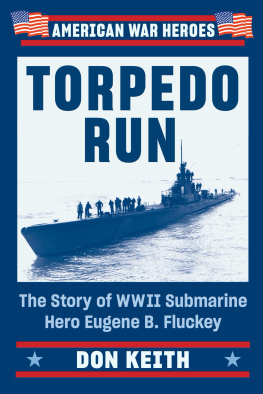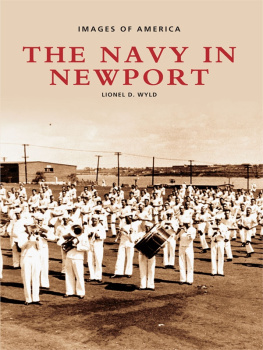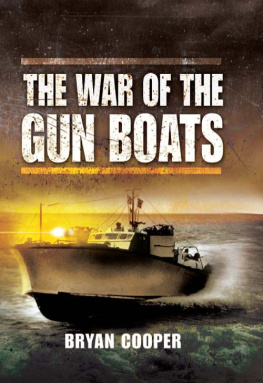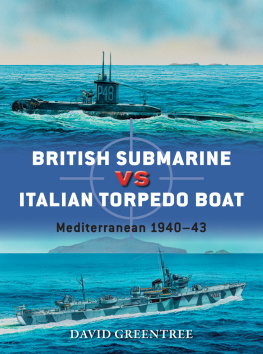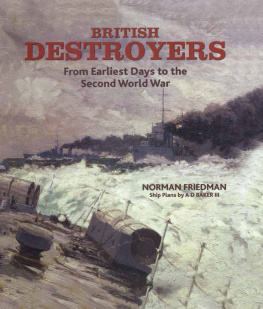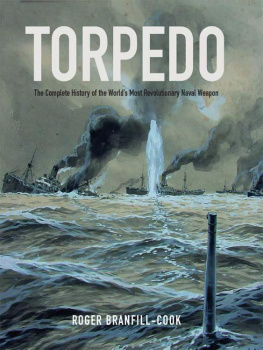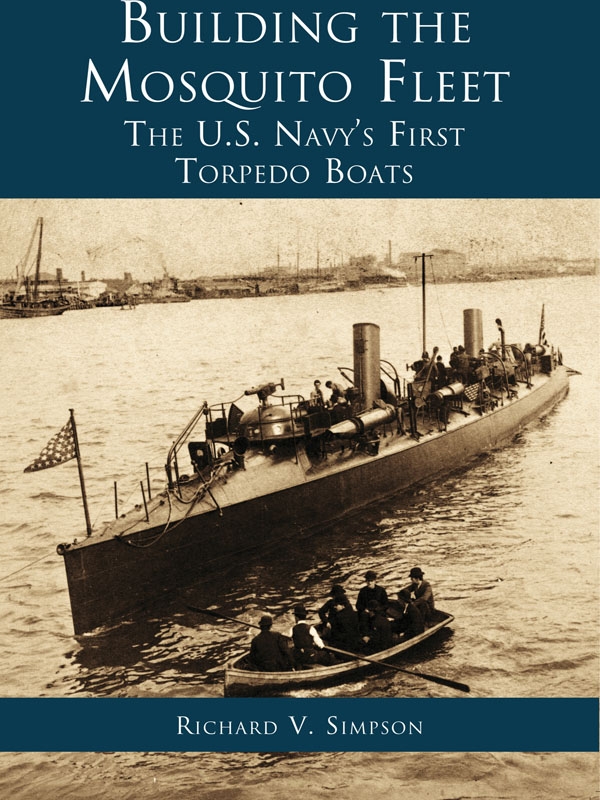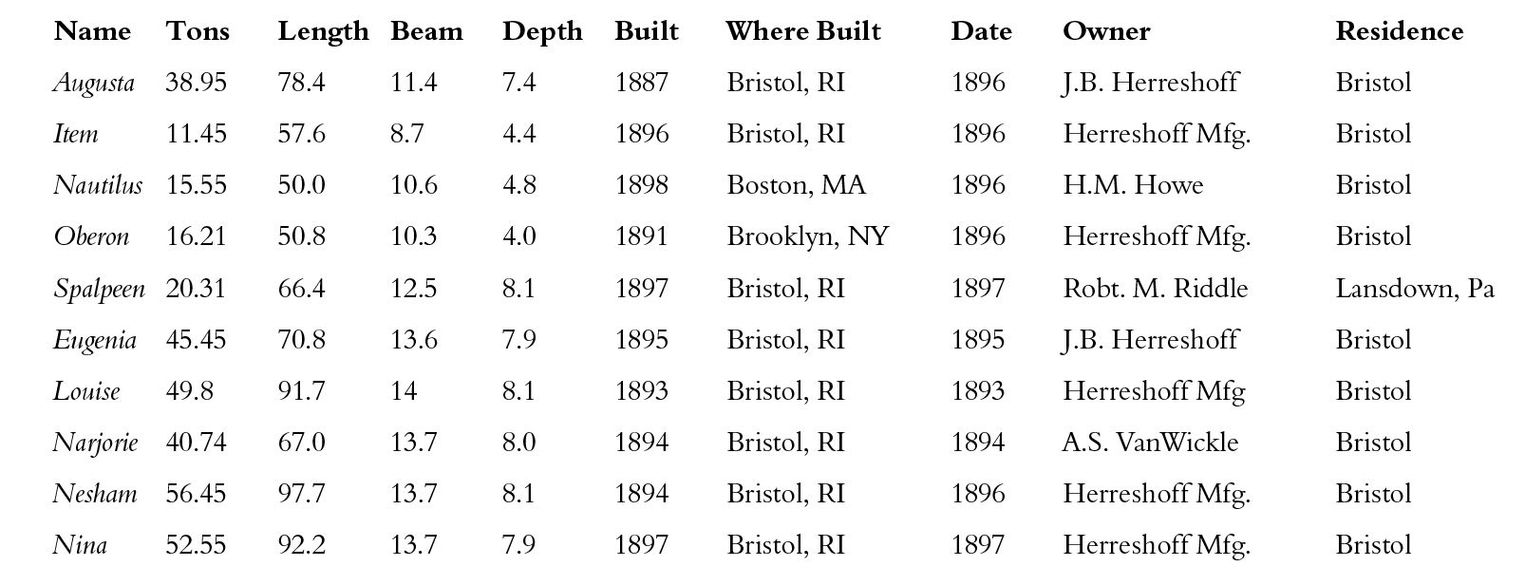Acknowledgments
Grateful appreciation goes to the many respondents who provided information on the history and developments chronicled in these pages. It is a pleasure to acknowledge several former colleagues at the Naval Undersea Warfare Center in Newport for helping while the manuscript progressed over a period of 20 years: Mary N. Barravecchia, head of the Newport Technical Library; William J. Conforti, senior editor of the Technical Information Division; and Arthur E. Burke, historian, retired from the Weapons Systems Department. Special thanks go to Lionel D. Wyld, Ph.D., who reviewed the completed text and provided many valuable suggestions to help make this effort an accurate, readable, and well-organized record. I am indebted to Will Willoughby at Arcadia Publishing for designing and editing this book.
Note on illustrations: The photographs and illustrations in this book are from diverse sources, and every effort has been made to identify those sources: contemporary periodicals, artists representations, picture postcard reproductions, U.S. Navy records, and other publications in the public domain. Generally, unattributed illustrations are from U.S. government archives that have been released for publication.
Appendix
Rhode Island in the War with Spain
On November 30, 1897, Adjutant Gen. Frederick M. Sackett of Rhode Island sent the first of hundreds of letters and wires concerning the state of readiness of each company, troop or battery commander, also the commanders of independent organizations, and inquiring what they would do, to prepare for duty in the approaching war if suddenly called upon to report at Newport with their organizations.
The request for information originated by direction of the commander in chief, Gov. Elisha Dyer. The correspondence and other official records generated over the next 18 months were assembled, published in one volume, and presented by the governor to the General Assembly at its January 1900 session.
In order to document the Bristol connection to the Spanish-American War, the following are excerpted from the collected communications that pertain to Bristol, the Herreshoffs, or torpedo boats.
Naval Reserve Torpedo Company,
Bristol, R.I., March 31, 1898.
Commander W. McCarty Little,
Comdg. Naval Battalion, R.I.
Sir-
I have the honor to report on the steam yachts available for auxiliary work, that, in the opinion of Mr. J.B. Herreshoff, those best suited for such duty are the Ballymena, length, 148 feet; beam, 18 feet; speed, 16 knots. Can mount at once four six pounder rapid fire guns, and one or two torpedo tubes. He r owner, Mr. Brown, (while not anxious to sell), is willing to do so if the government desires.
The Squid, length, 78 feet; beam, 11 feet was intended as a torpedo boat, primarily. She was built last year, and is some five miles faster than the Item, which is not in these waters. Speed, 16 knots, and available at once.
The Augusta could be ready in a day and could take our whole battalion if we could have her for ourselves. Length, 94 feet; beam, 12 feet; speed 13 knots. Could mount one pounders and one torpedo tube.
The Katrina could also be ready in 24 hours. She is 73 feet long 9 feet beam, and speed of 13 knots. She could take one pounders and [a] torpedo tube.
The Loon, 64 feet long, 9 feet beam, and speed of 11 knots is also available....
The Eugenia and Marjorie were not considered fast enough, nor could the Nautilus be for any use requiring speed.
The Katrina could be had for $11,000 and the Squid for $19,000.
I was unable to get the plans of any except deck and shear of the Katrina, though Mr. Herreshoff said he would give plans of any the government would especially desire.
Very respectfully,
W. Fred Williams
Lieut. Comity. Div. 1
Headquarters R.I. Naval Battalion
Newport, R.I., April 9,1898.
To the Adjutant-General
State of Rhode Island Providence, R.I.
Sir-
In conclusion of my report of March 1st, and in obedience to the order of the A.G.O. of March 28th, I... enclose the accompanying lists of vessels of this state from which may be selected such as may be desired by the government for the Mosquito Fleet.
Of the vessels engaged in commerce, or freight, or passenger traffic, the greater part are side wheel steamers. The propellers are small, and hardly come under any of the requirements of blanks 6, 7, or 8, N.W. Photographs of most of the vessels of the Providence, Fall River & Newport Line accompany this report, as well as some of the other vessels mentioned. These will give a very good idea of the types to be found here.
The vessels that would seem to be of use as contemplated in the blanks referred to are the Nahma, no where in Newport, but reported about to sail for Scotland; the Electra, which is not at present in Rhode Island; and the Ballymena, now laid up in Bristol. As small torpedo boats there and also those recommended by Mr. Herreshoff, and spoken of in detail by the annexed report of Lieut. Williams, commanding the Bristol division of this battalion, and which forms part of this report.
Very respectfully, W. McCarty Little
Commander, Commanding R.I. Naval Battalion.
F.P. Garrettson & Co., New York, May 23, 1898.
My Dear Governor [Dyer],
Not long ago, Oliver Belmont offered the U.S. Government a $100,000 torpedo boat which was declined for the reason it was not an unconditional gift. I have reason to believe that if a torpedo boat was built by the Herreshoffs, through popular subscription, and presented by the executive of the state of R.I., that is, yourself, the same would be most gladly accepted. My idea is that the fastest torpedo boat ever built should be constructed by that firm, who are natives of Rhode Island, and [the boat] named after Commodore Perry.
It seems to me that, though this sum is large, there is sufficient patriotism is the state to make it a success. I have personally subscribed $1,000. It seams to me that if prominent men of Providence, and the business men there, would take the matter in hand, through the Journal, Telegram, and other papers, and that a concerted movement of the larger towns, including Newport, within a few weeks the sum maybe realized.
Captain McLean of the torpedo station, Lieut. Wm. McCarty Little, Melville Bull, and others are highly in favor of the scheme. I have hardly seen any one as yet, but those whom I have seen, Senators Wetmore and Aldrich, and Mr. Capron.
I am rather sorry to see by the papers this morning, that the affair has leaked out. Your may use this letter as you see fit.
I am, respectfully,
F.P. Garrettson.
New York address, 119 Front St.
State of Rhode Island and Providence Plantations,
Executive Department
Providence, May 26, 1898.
F.P. Garrettson, Esq.,
119 Front Street New York, N.Y.
My Dear Sir,
I am in receipt of your letter of the 23d instant, in relation to the citizens of Rhode Island offering to the United States Government a torpedo boat. I agree with you that the scheme is a truly patriotic one, and I will do whatever I can to aid the cause, although my official duties at this time are so onerous and manifold that I am obliged to devote myself entirely to the interests of the state. I only wish that I had the means at my command to contribute to so worthy a cause.


